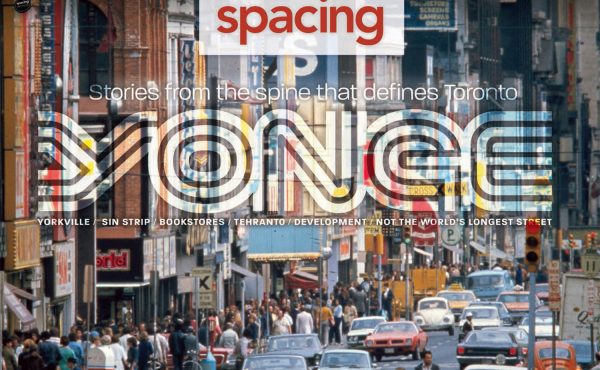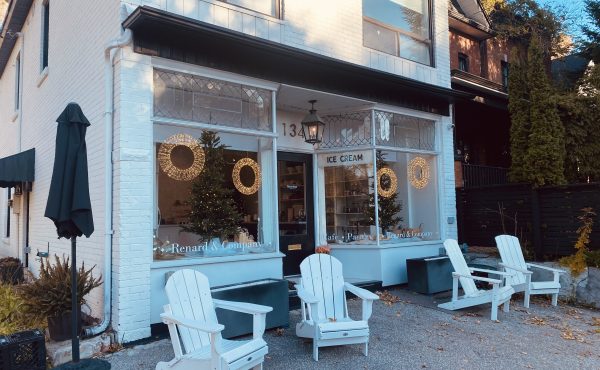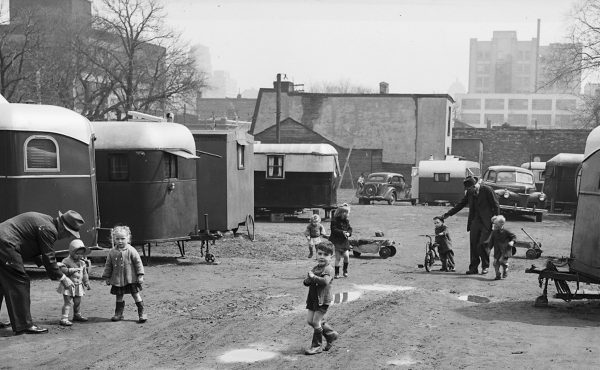
How do we meet the growing need for affordable housing in this city? The problem has become so big, it’s almost overwhelming — each year more than 30,000 people turn to Toronto’s shelters, nearly 70,000 households are on Toronto’s social housing waiting lists, and around 150,000 households spend over half of their income on shelter. These numbers don’t include the people who make their homes on the street, the people so many of us have learned to ignore when walking by.
It would help if the City — as well as the provincial and the federal governments — had a plan. Instead of talking about how the problem’s getting worse, counting people, and continuing to argue about whether it’s best to ban panhandling, it would help if we had actual goals that politicians could work towards and citizens could hold their representatives to.

As of this Thursday, we will. On October 26 respected housing advocate, Michael Shapcott, and the Wellesley Institute will release The Blueprint to End Homelessness. This thoroughly-researched report will outline a 10-year plan to move people from shelters to homes, and to fund almost 200,000 new and renovated affordable homes in the city. The Blueprint also aims to appeal to the dollar-conscious, tax-hike-hating crowd by showing how giving people homes instead of stuffing them into shelters will actually save money in the long run.
That it’s being released 17 days before our municipal election is very exciting. It’ll provide voters (and bloggers and reporters) with insight and ammunition to question and challenge candidates. One of the pieces of information people may most be interested in reading is the Blueprint’s ward-by-ward analysis of housing — in the past decade, no new affordable homes have been built in 23 of Toronto’s 44 wards. The plan evaluates which wards (and which councillors) have been most inhospitable to affordable housing in their communities.
The launch for the Blueprint to End Homelessness will take place in the Members’ Lounge at City Hall this Thursday at 1:00. You’ll be able to download the Blueprint from the Spacing Wire & Spacing Votes this Thursday at noon. Spacing has teamed up with the Wellesley Institute to give you a sneak peak before any other online media outlet in Toronto. Watch the Spacing Votes blog between October 26 and November 13 for interviews with candidates, Michael Shapcott and others in the housing community on whether they support the plan and what they’re going to do about it.
Stats courtesy of the Wellesley Institute.
Photo by Bouke Salverda




9 comments
I am so excited about what this WILL do for our city!
A plan comrades! Da, zis is just vat ve have needed! Surely nothing will go wrong with our fine plan, for it is not just a 5 year plan but a 10 year plan! For the Party and the People!
Or, you know, we could eliminate development charges for infill/brownfield housing, eliminate environmental approvals, dismiss with community meetings and council oversight of projects… You know, focusing on actually building things and letting people who know the business and put their money at risk do the job, rather than a bunch of people who believe that housing shouldn’t cost anything!
We would have much cheaper housing with:
No rent control, so there is less risk to such ling term investments
Allowing SRO and Rooming Houses, which provide cheap shelter, rather than working to eliminate them
Eliminate community input in development that complies with the goals of the official plan.
Accept that we live in a city, and eliminate height restrictions in the core (south of Bloor between Parliament and Bathurst) and along major arteries, especially at subway stations (Bloor, Yonge…).
Safety zoning only (around noxious industries, height restrictions to protect aircraft corridors), with housing development other wise allowed in all locations.
What won’t get housing built is to get yet more involvement from politicians, bureaucrats, and activists. This “plan” will cost more money and slow down the pace of construction in this city. Toronto already takes a very long time to process applications and approvals, even for development that specifically complies with zoning and the official plan. More places for politicians to get involved equals more opportunities for corruption, either through legal extortion of funds for “public ameneties” or through the more traditional Liberal Party brown envelope full of cash.
Hey,
I’m not sure why you think this plan will cost more money and slow down the pace of construction in this city — you haven’t even read it yet. It won’t be released until thursday.
Perhaps you missed the part in the post that said the 10-year plan aims to create almost 200,000 new and renovated affordable homes in the city. Compare this to stats from the past: only 1,435 homes were built in Toronto in the past decade. In the early 1990s, before funding was cut by the federal and provincial governments, 2,100 new affordable homes were built every year. The Blueprint sets an annual target of building 4,500 new homes and 2,000 supportive homes.
Building shelters instead of homes is not cheaper. The average cost to taxpayers for social housing is $199.99 a month, while the cost of providing shelter is $1,932.00 a month. Moving people from shelters to homes will actually end up saving us money — especially when you add up the health costs we aquire from people living on the street and in other poor living conditions.
I’m not sure how eliminating height restrictions would help see more affordable units built. Taller buildings would increase density in the city and allow the creation of more homes, but what’s the incentive for developers to make those homes affordable, when they can sell units to upwardly mobile singles and couples who are willing to pay good money for small spaces?
More than 200 US cities have adopted 10-year plans to end homelessness, as have Winnipeg, Vancouver and Saskatoon. Considering the need, it’s about time Toronto had a plan of it’s own.
would someone please wake me when the plan has a foolproof way to beat the NIMBYs like the ones who oppose Habitat developments and so on?
No rent control, so there is less risk to such ling term investments
Maybe you can explain how removing rent control will produce affordable housing. Vacancy decontrol has resulted in higher rents, not lower. Rental units have been built, but they have been high end units, not low end. How will allowing landlords the unrestricted ability to raise the rent on tenants who are already living in units do anything to promote afordable housing?
Some of Dale Duncan arguments do not stand up. He says, “moving people from shelters to homes will actually end up saving us money.” While that is true, the vast majority of the 200,000 households he hopes help are in the shelter system.
The people in shelters, as I understand, are a smaller group of people who need mostly supportive housing rather then affordable housing.
Darwin,
In addition to creating 4,500 regular affordable homes, the Blueprint also calls for 2,000 suportive homes per year. This is part of the overall 200,000 affordable homes the plan would see created and renovated over 10 years.
I’m not sure I understand your post. First you say the “vast majority” of the 200,000 households are in the shelter system”. Then, in the next paragraph, you say people in shelters are “a smaller group”.
Here are the stats I refered to in my original post:
– each year more than 30,000 people turn to Toronto’s shelters.
-nearly 70,000 households are on Toronto’s social housing waiting lists.
– around 150,000 households spend over half of their income on housing.
– these numbers don’t include the people who make their homes on the street.
(fyi – I am a “she”.)
Large investors got killed when rent control was implemented, as they could no longer raise rents so that they could maintain their buildings. Reducing the risk of investment will increase the supply, and push rents down.
We are seeing increases in vacancy rates and substantial drops in rents thanks to the massive increase in supply provided by the condo boom.
Any change to the housing market takes a substantial amount of time to happen, given the amount of money involved and the time and effort required to turn an empty piece of ground into housing (especially multi-family units).
The more assured investors are that the rules won’t be changed after they put their money in, the more they will be willing to take long term risks. The more Leftist Mayors and Councils try to compete with private developers and muse about putting them out of business, the less likely the “housing crisis” will ever be dealt with. But you wouldn’t know that, since the only thing you can do is complain and demand that the state rob from the rich, rather than actually build or finance anything.
We are seeing increases in vacancy rates and substantial drops in rents thanks to the massive increase in supply provided by the condo boom.
I have to disagree.
We’ve had vacancy decontrol for eight years now and though vacancy rates have gone up, rents have NOT dropped. Rents are up, and over the past ten years the average rent for a 1-bedroom aparmtnet in Ontario has gone up by $220. Fewer apartments are renting for under $600 today than ten years ago – 3% now versus 30% then.
Vacancy decontrol has been here for eight years and it has not resulted in a greater amount of affordable private rental housing. Average rents have gone up faster than inflation, and new rental housing has all been high end. What evidence do you have — concrete evidence, not speculation — that allowing landlords to raise rents faster than inflation without any restrictions will result in more low-end affordable private sector housing?
rents have gone up but rents have not dropped despite eight years of vacancy decontrol offering a less risky environment for landlords — who are still able to raise rents at the rate of inflation every year, and at a higher rate if they do more work.